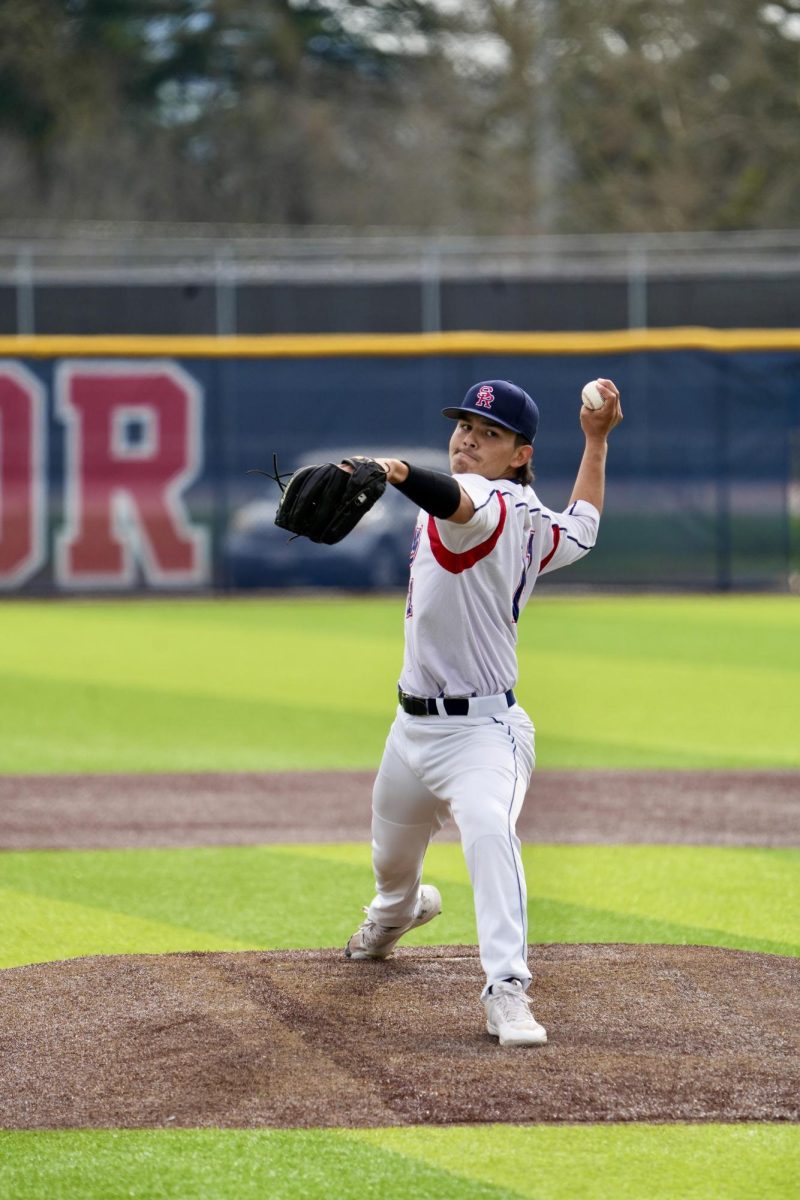MLB has been hit with a wave of pitcher elbow injuries in the first two months of the 2024 season. Specifically, there has been a spike in Tommy John surgeries to repair a torn UCL, or ulnar collateral ligament in the elbow.
A common scapegoat is the new pitch clock, though a much more clear correlation is a growing emphasis on pitching velocity across all age groups and levels of baseball.
Like all levels of the game, this phenomenon is present for the pitchers at Santa Rosa Junior College. In November of 2023, when asked how he and his teammates were progressing pre-season, Bear Cubs pitcher Tony Suarez answered first and foremost with how hard they were throwing.
Suarez is currently out of action for the Bear Cubs and will undergo Tommy John surgery over the summer. “A big thing is that everyone is chasing velocity,” Suarez said. “People are trying to throw harder and putting more stress on their elbows. I think heavy offspeed usage has a role in it too because breaking balls put more stress on the elbow. It’s an unnatural movement for the arm and UCL.”
While college data is less accessible, Suarez’s assessment is true of the MLB. In 2013, 56.9% of all pitches were fastballs, compared to 47.3% in 2023. More so, offspeed pitches are being thrown harder. Since 2017, the average velocities for curveballs, changeups and sliders have all increased by about 1 mph.
Out of the 166 players on the injured list on Opening Day in 2024, about 80% or 132 of them were pitchers. Notable starting pitchers who will soon receive or are currently recovering from Tommy John surgery include Spencer Strider, Jacob DeGrom, Sandy Alcantara, Shane Bieber, Robbie Ray and Shane McClahanan.
Naturally, a year or more absence of star players negatively impacts quality of play and viewership league wide. The players suffer, the league suffers and the fans suffer.
According to The Ringer, former MLB athletic trainer Stan Conte provided a report stating that in 2023, 263 MLB pitchers across all levels had UCL surgeries, the second highest out of any year since 2010.
2021 had the most at 316 due to the abrupt resumption of the 2020 season during the COVID-19 pandemic, combined with the crackdown on pitchers using foreign substances that forced them to dramatically alter how they threw midseason.
Outside of the outlier, the shortened season in 2020 and the sticky substance crackdown in 2021, UCL injuries have steadily increased every year since 2010. This directly correlates with the increase of the average fastball velocity.
Statcast advanced tracking data for pitchers has only been available since 2017, but in its inaugural year the average fastball was 93 mph, compared to 94 in 2023. While 1 mph doesn’t sound like a major difference, to a hitter it makes a world of difference.
The far more stark difference is the two pitchers who averaged more than 99 mph on their fastball in 2017, compared to 13 pitchers in 2023. Additionally, 141 averaged more than 95 mph in 2017 compared to 219 in 2023.
The race for velocity starts long before pitchers reach MLB. With the popularization of advanced training programs, scouts, coaches, parents and players alike have discovered that velocity is not just a natural gift, but a skill that can be taught at a young age. A 2015 study showed that 57% of Tommy John surgery recipients are between ages 15 and 19.
Despite all of the many facets to pitching, including but not limited to control, break, sequencing and tunneling, the primary tool scouted in today’s pitchers is velocity. Beyond high school, pitchers can’t get away with just throwing fastballs and need to develop other skills. If a pitcher doesn’t throw hard, he effectively has no shot of advancing to the next level.
“If you want to play high-level baseball, you have to throw hard. It’s a prerequisite now,” said Mike McFerran, Wake Forest pitching coach, in an interview with The Washington Post.
Part of the problem is that outside of a few outliers, high velocity is essential for pitcher success. For MLB fastballs between 89-90 mph since 2008, hitters miss on about 14% of swings. Swing and misses steadily increase as velocity increases. On pitches over 100 mph, hitters swing and miss on more than 32% of swings.
Since 2018, seven different pitchers have won the Cy Young award in a full season, or the award for the best pitcher in a given league. Of those pitchers, all seven threw an average fastball of at least 95.5 mph. Four of those seven have undergone Tommy John surgery since winning the Cy Young award.
Unless they have impeccable control and movement, pitchers have to throw hard to have any hope of making the major leagues. If pitchers don’t throw hard enough, they almost certainly won’t have success, while increasing the chance of injury.
Perhaps doing away with the pitch clock and allowing sticky substances would help alleviate injuries here and there, but UCL injuries were trending upwards before either of those factors were present.
Maybe somebody will learn a new way to pitch that puts less strain on the elbow and can be taught and trained sport-wide, while still being effective at getting batters out. Even still, this would require years to actually have an impact on injuries. Until then, we all have to spend each season hoping that our favorite college and professional pitchers aren’t the unlucky ones forced to go under the knife.





